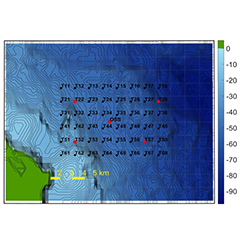Miros is a technology company that specialises in measuring the ocean surface. With 35 years of experience engineering dry-mounted, radar-based sensors robust enough to weather the harsh and unpredictable conditions of the North Sea, the company develops innovative solutions for real-time, local environmental monitoring for the global offshore and maritime industry. By making essential data available to all relevant stakeholders, Miros continues to develop its long track record of enhancing the safety, performance, and efficiency of offshore operations, including those related to both floating and fixed offshore wind installations.
In an effort to expand upon its legacy of development and innovation, 2019 saw Miros establish a knowledge transfer partnership (KTP) with Strathclyde University.
This collaborative programme, funded by InnovateUK, aims to embed academic expertise within the industrial landscape to accelerate R&D and improve competitiveness.
Strathclyde University, and particularly its EEE (Electronic and Electrical Engineering) department, is widely recognised for its offshore wind research. This competence, along with Miros’ proven portfolio of Cloud-integrated wave sensors, seemed to be an excellent match, both academically and commercially. As the partnership gathers steam, we decided it was high time to talk with our KTP Associate, Erik Salo, about his exciting work bringing new ideas to the forefront of the offshore wind industry. Maggie McMillan, our Sales Manager for Renewables conducted the interview.
Maggie McMillan: Hi Erik! Before we get into the nitty gritty, would you be so kind as to introduce yourself?
Erik Salo: Sure. I’m Erik Salo, an Estonian researcher and engineer living in Scotland – probably the best place in the world for wind energy research right now.
MM: Could you tell us a little about your background in offshore wind?




























